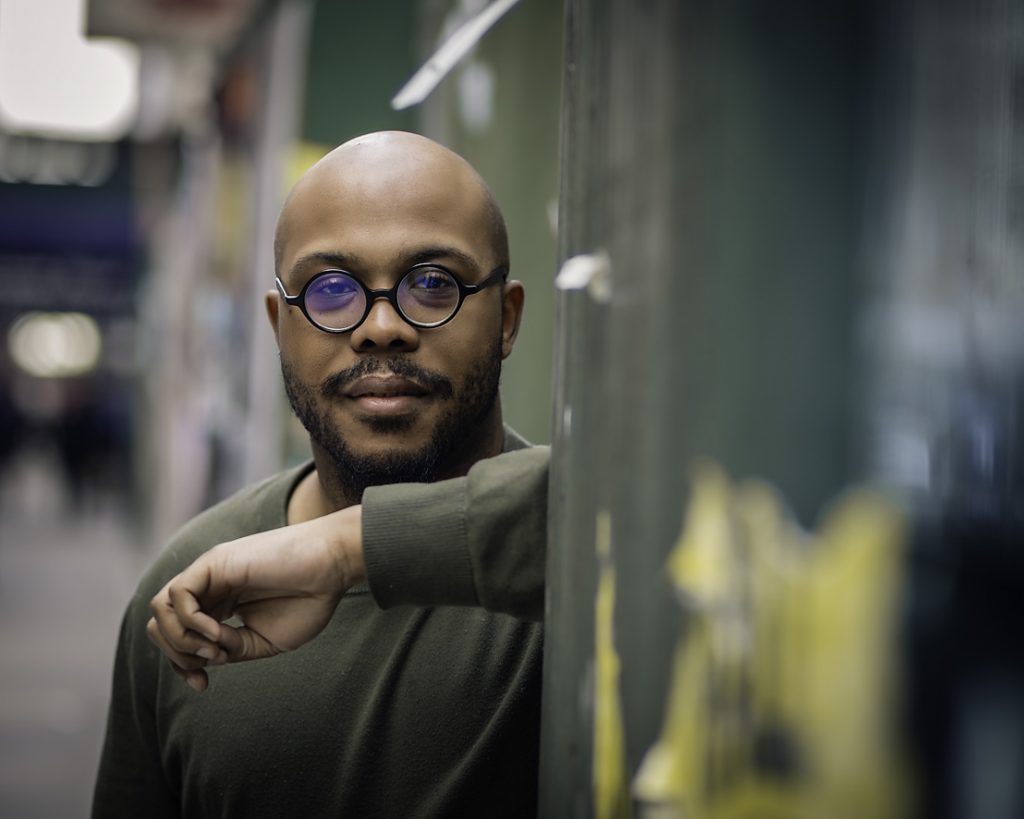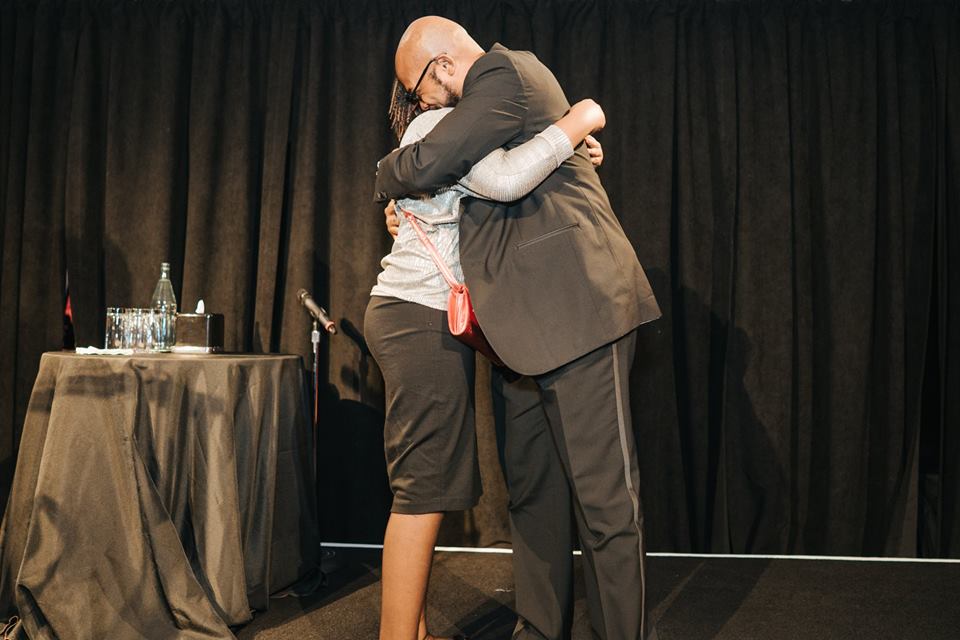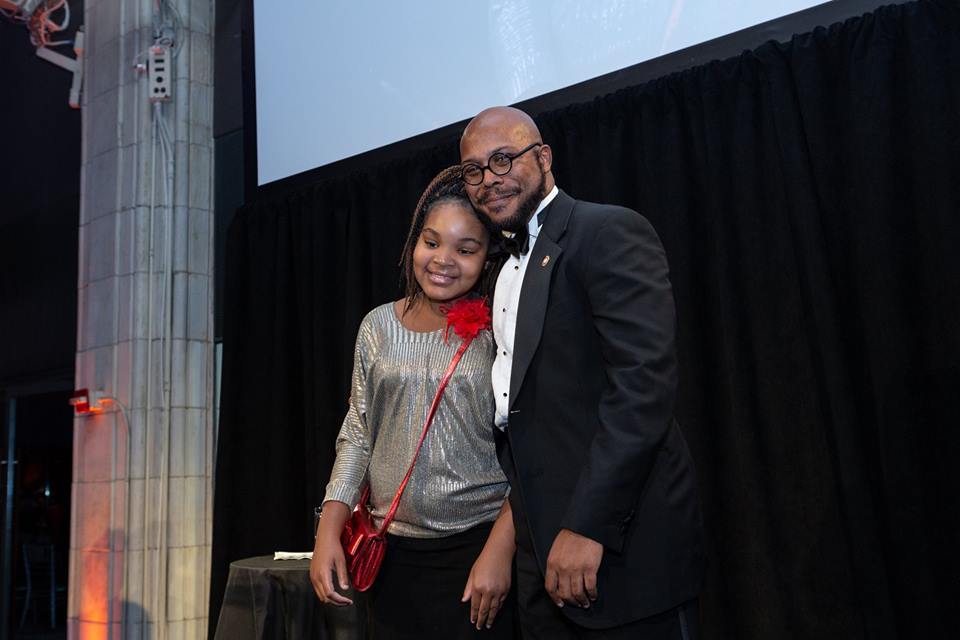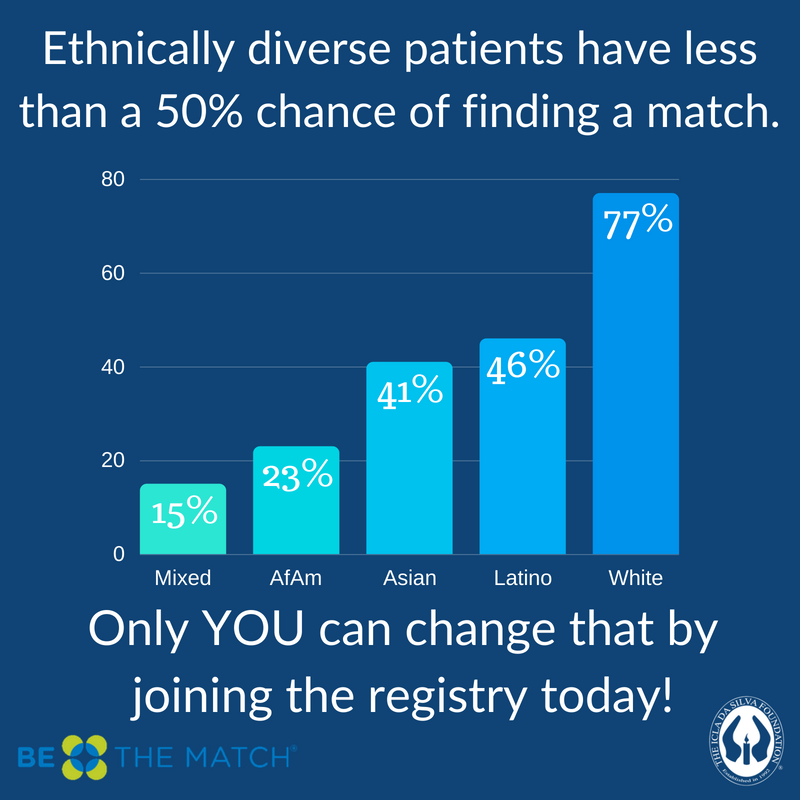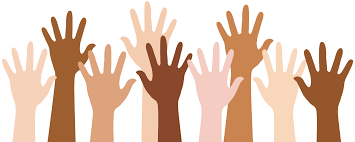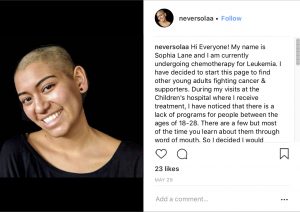Have you ever given to a complete stranger?
to Give [giv] verb: to freely transfer possession of something to someone: to hand over, without expecting compensation
Michael Powell is a “giver.” He regularly donated blood. He also donated his bone marrow. Twice. Once with a stem cell transplant, and again through a bone marrow transplant. He gave, not knowing where, or to whom it was going. He is a giver.
In 2007, while at a company blood drive in NYC, he met some folks from the Icla da Silva Foundation. They were asking people to consider joining the Be The Match bone marrow registry. Most blood cancer patients, people with varying forms of leukemia, lymphoma, or sickle cell, don’t have a matching donor in their family. They require a transplant from a stranger in order to survive. Their doctors search the Be The Match registry, looking for a matching donor.
On the day in 2007, after he finished donating blood, Michael joined the bone marrow registry. He filled out some forms, swabbed his cheek, and was entered onto the registry. It was that simple. The process is now digital, and they mail the swabs to your home, but anyone between the age of 18 and 44 can join.
Michael agreed to donate his stem cells or bone marrow, should the need ever arise.
Matching and the Challenge
Unfortunately, that need arises every day. Approximately 14,000 times every year. The challenge is in finding the perfect “match” for those patients in need of a transplant.
Only one out of every 406 people on the registry will match and donate. A match is usually determined by a person’s ethnic ancestry. An African American patient is most likely to receive a successful transplant, a perfect match, from an African American donor. Michael wasn’t aware of it at the time, but African American donors are in short supply. For the African American patients with a blood cancer or sickle cell, only 23% are able to find a match on the current registry. By comparison, Caucasians are able to find a successful match 77% of the time.
There simply aren’t enough potential donors included on the registry, especially donors of ethnic diversity. The Icla da Silva Foundation is doing its best to change that by specifically holding registration drives within diverse communities.
You can join the registry by clicking the link. You may match a patient in need.
Michael’s First Bone Marrow Donation
In 2013, six years after joining the registry, Michael received a call that he was a match. He had forgotten that he was even on the registry. Be The Match explained the process and asked if he would be willing to donate his stem cells through a PBSC donation.
He agreed.
They scheduled a check-up, to make sure he was physically fit, and organized some tests to ensure he was a perfect match. The donation process includes injections of filgrastim, which helps increase the number of blood-forming cells in the body. Be The Match organized a visiting nurse, who came by his apartment daily, for the filgrastim shots.
Five days later, he donated at Memorial Sloan Kettering hospital in NYC. It took about 4 hours. His blood was removed through an intravenous needle in one arm, passed through a machine that collected the blood-forming cells, and the remaining blood was returned to his body through a needle in the other arm.
Michael told me that Be The Match took care of everything. They offered to have someone go with him to the hospital. They organized a car to pick him up and take him back home. They even paid for a meal for him and a friend after his donation.
He insists the process was easy and pain-free. He had some joint stiffness for a few days, but he would recommend that everyone join and donate if they are offered the opportunity.
The next step was waiting to hear if it was successful for the patient.
Unfortunately, shortly after the transplant, due to complications from their cancer, the patient passed away. Michael was greatly affected by that news. He says “it meant so much for me to give, but to learn that the patient passed away, that was very heavy on my heart.”
Michael’s Second Donation
In 2017, he received a second call. He was a possible match for another patient.
Again, Be The Match kept in close communication and organized everything for him. They scheduled physical exams and blood tests.
While waiting to see if Michael was the best match, the patient had complications and the doctor indicated that this time, a surgical marrow extraction was the preferred method.
Michael had never stayed in a hospital before, and he had never had surgery.
Still, he agreed that he would donate.
When I asked him why he shrugged and said to me “Someone needed help and it was an opportunity for me to help that person…I couldn’t think of a reason not to do it.”
They scheduled surgery for June at Memorial Sloan Kettering, where they would extract bone marrow from his pelvic bone. He was anxious. Understandable so.
Michael tells me that the nurses and doctors at the hospital were all incredible. Answering all of his questions and making sure he was comfortable with his decision to donate his bone marrow. Right up to the very last minute, the doctor and anesthesiologist asked him if he was still comfortable going through it.
Once again, Michael said yes.
On June 1, 2017, at Memorial Sloan Kettering hospital in New York City, Michael donated his bone marrow through a surgical procedure. On June 2, a sickle cell patient received Michael’s bone marrow in a transplant at Nationwide Children’s Hospital in Columbus Ohio.
Always positive, Michael remarked that during the surgery, it was the best sleep he had ever had. He was emotionally relieved that it was over; physically, he was stiff.
Again, I kept pushing Michael about the why. I think he grew tired of me asking. His response was direct and to the point – “I didn’t think of why, I thought of how, and when do you need me. I knew I wasn’t going to be harmed from it.”
I still find his perspective to be remarkable. Michael believes that we are all connected. It is very important to him. He tells me that “we all have a chance to make a difference in someone’s life.” While that is very true, unfortunately, many people do not act on it.
Michael Powell did, and he made a difference in someone’s life. We are forever grateful.
The Meeting
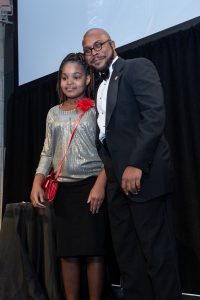 After a transplant in the United States, the donor and recipient are not allowed to meet for at least a year. On October 17, 2018, 16 months after the bone marrow transplant, Michael was invited to the annual Icla da Silva Hope Gala. It was at the Gala that he met his patient, Aunesti Sullivan.
After a transplant in the United States, the donor and recipient are not allowed to meet for at least a year. On October 17, 2018, 16 months after the bone marrow transplant, Michael was invited to the annual Icla da Silva Hope Gala. It was at the Gala that he met his patient, Aunesti Sullivan.
Every year at the Gala, we introduce patients and their donors to each other on the stage. It was the first time that Michael and Aunesti met. It was an emotional experience for everyone in the room.
Aunesti is a 13-year-old girl from Toledo, Ohio. She was born with Sickle Cell Anemia, and as a result of the Sickle Cell, was also suffering from Avascular Necrosis (AVN), or brittle bone disease.
Aunesti is doing very well. She is active, back in school, and living the life of a teenager.
Michael is happy to have made a difference in her life. He tells me they keep in constant contact via text and phone. He has agreed to work with us to help spread the word about the importance of joining the registry and staying committed to donate if you ever match a patient In need.
Anyone between the ages of 18 and 44 can join by clicking the link below.
Thanks for reading, and thank you to Michael for making a difference in someone’s life. We are all connected.
Written by Bret Itskowitch
A Time for Feeling Both Thankful and GratefulOn October 17, 2018, Aunesti Sullivan and her extended family met Michael Powell, the man who saved her life.
Aunesti, a 13 year old girl from Toledo, Ohio, was born with sickle cell anemia. At the age of 10, as a result of the sickle cell, she developed Avascular Necrosis (AVN), also known as brittle bone disease.
Needless to say, Aunesti’s young life has been filled with treatments, transfusions, and extended hospital stays.
Her doctors recommended a bone marrow transplant to cure her disease, and she was fortunate to find a 100% matching donor through the Be The Match registry. That Donor is Michael Powell, and he joined the registry through a donor drive run by the Icla da Silva Foundation.
Michael donated his bone marrow through a surgical procedure on June 1, 2017 at Memorial Sloan Kettering in New York City. On June 2, Aunesti received a bone marrow transplant at Nationwide Children’s Hospital in Columbus Ohio.
One year following the transplant, and Aunesti is doing very well. She is active, back in school, and living the life of a teenager. This past October, at the annual Icla da Silva Hope Gala in New York City, Aunesti and Michael met for the first time.
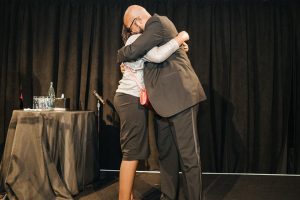 “He’s given me a quality of life, he’s given me the opportunity to be a teenager, and live life to the fullest.”
“He’s given me a quality of life, he’s given me the opportunity to be a teenager, and live life to the fullest.”
– Aunesti Sullivan
“Someone needed help and it was an opportunity for me to help that person…I couldn’t think of a reason not to do it.”
– Michael Powell
As we begin the coming holiday season, we are both thankful and grateful. One person gave and another received, and both are better as a result.
Anyone between the age of 18-40 can join the registry and become a potential donor for a patient in need. Please join.
Watch below for a recap of their meeting at the 26th Icla da Silva Hope Gala on October 17, 2018:
Written by: Bret Itskowitch
Searching for a Bone Marrow Donor – Guided by Angels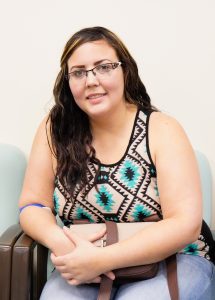 Life is a series of ups and downs. For some, it’s not an even balance, but we keep the faith and find a way to move forward. This is the story of Naileen Colon. Naileen faces many struggles, but she has faith in the guidance of her angels.
Life is a series of ups and downs. For some, it’s not an even balance, but we keep the faith and find a way to move forward. This is the story of Naileen Colon. Naileen faces many struggles, but she has faith in the guidance of her angels.
Diagnoses
Naileen grew up in Ponce, on the southern coast of Puerto Rico. At the age of nine, she was diagnosed with megaloblastic anemia, a condition in which the bone marrow fails to produce mature red blood cells. She maintained a healthy lifestyle to treat it. She lived a pretty normal, happy life for the next 15 years. She got married, had a baby and kept moving forward.
Unfortunately, in 2013, Naileen began to feel very weak. She was always tired and she was struggling with depression. After visiting her doctor, she was diagnosed with Chronic Lymphocytic Leukemia (CLL), a cancer of the blood and bone marrow.
Relapse
Unfortunately, it was barely more than a year when she had her first relapse. This began a downward spiral for Naileen.
She had to resign from her job, her husband left, and she moved back into her mother’s house with her son. Moving back home was a very difficult transition. Her son Onix is autistic, and requires a lot of attention. In addition, her mom was ill and constantly in and out of the hospital. Naileen struggled to find a balance between taking care of her son, her mother, and herself. She held onto her faith and remained confident that God would not leave her side. She was being guided by angels.
Her First Angel
In 2015, it was determined that her blood transfusions were not working as planned. Her cells were not reproducing. Naileen was advised that she would need a bone marrow transplant.
At this time, Naileen talks about meeting an ‘angel’, Elba Lebron. Elba is a community engagement representative from the Icla da Silva Foundation. Elba organizes donor drives and works closely with patients throughout Puerto Rico who are in search of a life saving bone marrow donation. Elba provided the support that Naileen needed to continue moving forward. With Elba’s help, they hosted numerous marrow drives in Puerto Rico. Naileen felt better about her diagnosis. She realized that she wasn’t alone. In raising awareness during the donor drives, she gained more hope. She focused on helping others. Even if she could not find a match for herself, she may be able to help others to find a match. That feeling gave her satisfaction. Her friendship with Elba was a major turning point in Naileen’s journey.
Her Second Angel
Naileen began a pill form of chemotherapy and was slowly restoring her health. She established a friendship with a man named Jerardo, who became her second angel. As time passed, they began dating and a romance quickly blossomed. “It felt like a blessing, I didn’t think anyone would want to deal with something like this. He is always there for me, helping me, and he is a great father to my son. My mom was happy to see things turn for me. We moved to Kissimmee, Florida in August 2016. We wanted a better quality of life, and access to more advanced treatment for myself and my son Onix.”
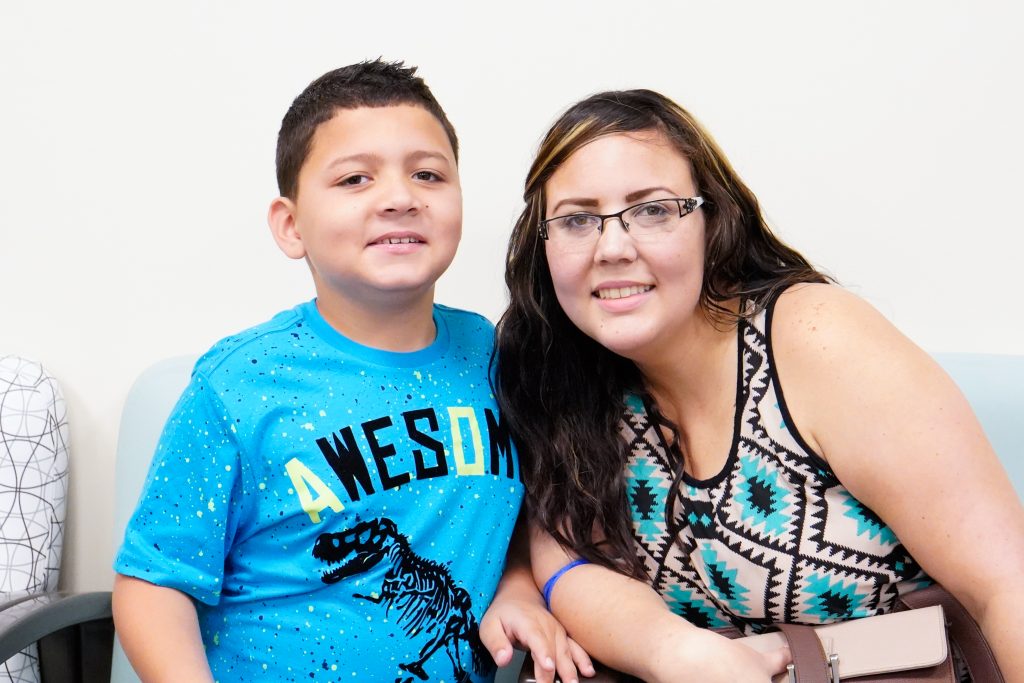 Moving Forward
Moving Forward
Naileen enjoys watching movies at home with Onix and Jerardo. She loves the beach, but because of her diagnosis and the risk of infection, she can’t visit as often as she would like. She loves being a mom, taking care of Onix and watching him progress in his everyday interactions with people. Watching him play makes her happy. Naileen has managed her challenges and is happy with her accomplishments so far, especially with her son, but she wants to do so much more. She understands that the ups and downs will continue, and although there are times when she questions what will happen next, Naileen knows that God’s plan is far more than what she can imagine. She puts all of her trust in him, and the guidance of her angels.
The Next Challenge
Naileen is in desperate need of a bone marrow transplant. The doctors have been searching the national registry for a matching donor for 3 years. Finding a matching bone marrow donor is not an easy feat, especially for patients with Hispanic or Latino heritage. There is currently no match for Naileen on the Be The Match bone marrow registry. The registry is the largest and most diverse in the world, but patients of Hispanic origin only have a 46% chance of finding a potential match.
The solution to this challenge is to get more people, especially those with diverse ethnic origins, to join the bone marrow registry. You can join online in less than 10 minutes, and agree to become a potential donor for patients like Naileen.
Please join the registry, for Naileen or the 14,000 other patients who are searching for their match.
You can also help by sharing Naileen’s story. As we increase awareness of the need for more potential donors, especially for people with diverse ethnicities, we hope that more people will understand the importance in joining the registry. The donation process is not difficult and there is no reason to be afraid. You can read more about it here: donation process
Thank you for reading Naileen’s story. We hope that her angels will help us guide more potential life-savers to join the bone marrow registry. It can start with you.
Surviving Cancer While Being Ethnically DiverseCelebrating Diversity
We live in a world that is becoming more ethnically diverse. This diversity makes every one of us richer in experience, knowledge, and understanding. Every day we observe different cultures, practices, foods, and religions. We recognize people for who they are, with different skin color, dress and speech.
We understand that diversity makes each one of us unique.
We celebrate it. We honor our heritage and our own ethnic background. We tell stories and share traditions with our sons and daughters, and we reflect on the uniqueness that makes us who we are.
The Challenge
For patients suffering from a blood cancer like leukemia, lymphoma or sickle cell, being ethnically diverse can challenge their survival.
70% of patients in need of a bone marrow or stem cell transplant, do not have a matching donor in their family. As a result, they rely on the NMDP registry, managed by Be The Match, to find a potential donor, a matching donor.
The best chance for a match is to find someone of similar ethnic ancestry who is willing to donate stem cells or bone marrow.
Unfortunately, many ethnicities are currently underrepresented on the registry, making it more difficult for those patients to find their match.
The Icla da Silva Foundation focuses on adding more ethnically diverse donors to the Be the Match registry. We strive to educate and inform more people about the importance of adding yourself to the registry and giving more hope to patients who are searching for a potential donor.
Answering The Challenge
There are 3 common questions regarding becoming a potential donor and giving a patient a second chance at life.
A. Is It Difficult?
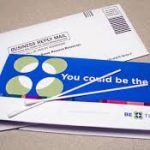 Joining the registry to be included in patient searches is easy. Click any of the links on this page, set up an account with email and password, and answer a few questions. A swab kit will be sent to your home. Once you swab the inside of your cheek and return it to Be the Match, you are entered into the registry and included in patient searches.
Joining the registry to be included in patient searches is easy. Click any of the links on this page, set up an account with email and password, and answer a few questions. A swab kit will be sent to your home. Once you swab the inside of your cheek and return it to Be the Match, you are entered into the registry and included in patient searches.
Everyone should do it.
The total registration process takes about 8 minutes…10 minutes if you type slow like me.
B. Is It Scary?
 There has been a lot of misinformation about bone marrow donation in movies and popular culture.
There has been a lot of misinformation about bone marrow donation in movies and popular culture.
None of it is true.
There are two ways to donate bone marrow, (1) the more common PBSC method, performed at an outpatient clinic, and (2) a donation performed surgically, at a hospital.
- 80% of donors make their donation through PBSC (stem cell donation), which is a non-invasive outpatient procedure. PBSC donors receive daily injections of a drug called filgrastim for five days, to increase the number of blood-forming cells in the bloodstream. Then, through a process called apheresis, a donor’s blood is removed through a needle in one arm and passed through a machine that separates out the blood-forming cells. The remaining blood is returned to the donor through the other arm.
- 20% of donors do so with a surgical procedure done under general or regional anesthesia in a hospital. While a donor receives anesthesia, doctors use needles to withdraw liquid marrow from the back of the pelvic bone.
C. Is It Expensive?
The cost to donate bone marrow or stem cells is 100% free and doesn’t utilize your insurance. Be the Match will make sure that you have everything you need to donate. Whether it’s a ride to a transplant center, a letter explaining your donation to your employer, or help with childcare, Be the Match will be there for you.
Consider A Simple Solution
Join the Registry
Everyone can become part of the solution by joining the Be The Match registry. Inform your family and friends about the importance of adding themselves to become potential donors. You may become a life saver to a patient in need, a patient who does not have a match.
What would you do if you were faced with the challenge of dealing with a blood cancer like leukemia or sickle cell? Where would you go to search for a matching donor? How would you find someone who shares a similar ethnic background to you? There are over 14,000 patients who currently need a matching donor. Many will not survive because they can’t find someone like them, someone like you.
Remember, ethnically diverse patients are not well represented on the registry. If you are ethnically diverse, you are the only one who can change this fact.
If you have already registered, thank you. There are other ways that you can help us add more diversity to the registry.
Host A Drive
Are you involved with a group or organization that is ethnically diverse? Join forces with us and host a donor drive at your school, work, or social organization.
We do all of the work, you just have to make the introductions.
Volunteer
You can also volunteer, and work with us to make our donor drives bigger, better and more inclusive.
The Donation Process
Do you still have questions about the donation process?
Please join the registry and give greater hope to patients in need, it’s their only chance for survival.
Remember, you may be someone’s cure.
Sign Up. Save a Life.
Written by Bret Itskowitch
Olga – Todavía Me NecesitanEllos Todavía La Necesitan
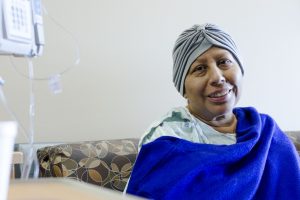 Olga está luchando contra el cáncer por segunda vez. Ella fue diagnosticada por primera vez con leucemia en el 2016, y entró en remisión. En 2018, luchó durante meses con cansancio, dolores de cabeza constantes y hematomas extraños. En marzo, le diagnosticaron AML, leucemia mieloide aguda. El AML es un cáncer de la sangre y la médula ósea y en general, empeora rápidamente si no se trata. Su mejor oportunidad de sobrevivir es un trasplante de médula ósea.
Olga está luchando contra el cáncer por segunda vez. Ella fue diagnosticada por primera vez con leucemia en el 2016, y entró en remisión. En 2018, luchó durante meses con cansancio, dolores de cabeza constantes y hematomas extraños. En marzo, le diagnosticaron AML, leucemia mieloide aguda. El AML es un cáncer de la sangre y la médula ósea y en general, empeora rápidamente si no se trata. Su mejor oportunidad de sobrevivir es un trasplante de médula ósea.
Olga es madre de tres hijos y abuela de dos nietos. Tiene 52 años. Su familia emigró hace 15 años de su pueblo pequeño, San Buenaventura, en Coahuila, México. Vinieron buscando un mejor tratamiento para su hija Betty, que padecía de una deficiencia crónica de crecimiento. Tomó 8 años para que Betty se recuperara y para entonces, habían formado una vida aquí.
Ella ha estado casada por 30 años. Su esposo, Jesús, trabaja en la construcción y es el sostén principal de la familia. “Trabajaba en la tienda de segunda mano de mi madre en México, pero desde que llegamos aquí me he quedado en casa para cuidar de los niños y la casa,” dijo ella. No poder cuidar de su hogar es lo que más le frustra a Olga de tener cáncer, ella siempre está cansada. La familia se mudó aquí hace 15 años para buscar ayuda para su hija y ahora las cosas han cambiado. Betty dejó su trabajo para cuidar a su madre a tiempo completo.
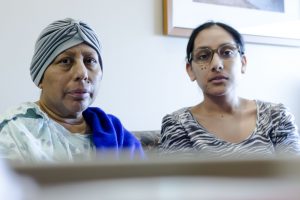 Una temperatura elevada y un recuento bajo de glóbulos blancos hacen que Olga regrese al hospital, con Betty a su lado día y noche. “No fue así la primera vez”, dijo Olga. “Siento que me dan de alta solamente para dar la vuelta y regresar”. Ha sido hospitalizada muchas veces desde que recibió su segundo diagnóstico en marzo del 2018.
Una temperatura elevada y un recuento bajo de glóbulos blancos hacen que Olga regrese al hospital, con Betty a su lado día y noche. “No fue así la primera vez”, dijo Olga. “Siento que me dan de alta solamente para dar la vuelta y regresar”. Ha sido hospitalizada muchas veces desde que recibió su segundo diagnóstico en marzo del 2018.
Olga no tiene seguro médico y le dijeron que las únicas opciones para el tratamiento eran el MD Anderson Center en Houston, o buscar asistencia médica en México. La historia de la familia con el sistema médico en México es lo que los llevó aquí en primer lugar. “Aquí trabajan contigo si no puedes pagar de inmediato“, dijo Betty. “En México, si no tienes el dinero por adelantado, no recibes tratamiento“.
Se Necesita Un Pueblo
La familia está agradecida por la ayuda que han estado recibiendo. Estaban agradecidos de encontrar un médico del Medical City Dallas Hospital en Dallas, Texas, que aceptó realizar el procedimiento una vez que se encuentra un donante compatible. La Fundación Icla da Silva está ayudando a la familia realizar pruebas de compatibilidad a los hermanos y hermanas de Olga tanto en los Estados Unidos como en México. Solamente alrededor del 30 por ciento de los pacientes encontrarán un donante compatible dentro de su familia. El otro 70 por ciento recurre al registro Be The Match para encontrar un donante compatible. La compatibilidad se basa en proteínas o marcadores de HLA (antígeno leucocitario humano) que se encuentran en casi todas las células del cuerpo. Ayudan al sistema inmune a identificar las células que pertenecen, y provocan las defensas del sistema inmune del cuerpo. Los tipos de HLA son heredados y personas de la misma ascendencia étnica suelen ser más compatible.
Desafortunadamente, las minorías están subrepresentadas en el registro, lo que hace que sea más difícil para esos pacientes encontrar un donante compatible. El equipo de Icla da Silva se enfoca en cambiar este desafortunado hecho y continuamos realizando campañas de donación de médula en todo el país en un intento de educar y agregar más diversidad al registro Be The Match.
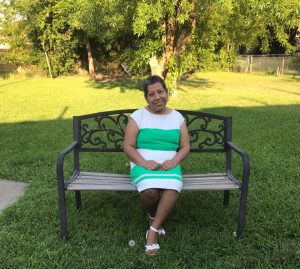 Olga tiene fe en que encontrará una donante compatible y ella se recuperará. Refiriéndose a su familia, “todavía me necesitan“, dice ella, “Dios me da fuerza“.
Olga tiene fe en que encontrará una donante compatible y ella se recuperará. Refiriéndose a su familia, “todavía me necesitan“, dice ella, “Dios me da fuerza“.
Únete al registro para ayudar a Olga u otro de los 14,000 pacientes que buscan un donante.
Olga’s Story – They Still Need Me
They Still Need Her
 Olga is battling cancer for the second time. She was first diagnosed with leukemia in 2016, and went into remission. In 2018, she struggled for months with chronic fatigue, constant headaches and strange bruising. In March, she was diagnosed with AML, acute myeloid leukemia. AML is a cancer of the blood and bone marrow and usually gets worse quickly if not treated. Her best chance of survival is a matching bone marrow transplant.
Olga is battling cancer for the second time. She was first diagnosed with leukemia in 2016, and went into remission. In 2018, she struggled for months with chronic fatigue, constant headaches and strange bruising. In March, she was diagnosed with AML, acute myeloid leukemia. AML is a cancer of the blood and bone marrow and usually gets worse quickly if not treated. Her best chance of survival is a matching bone marrow transplant.
Olga is a 52-year-old mother of three and grandmother of two. Her family emigrated to the Dallas area fifteen years ago from a small-town named San Buenaventura, in Coahuila, Mexico. They came seeking better treatment for their daughter Betty, who was suffering from a chronic growth deficiency. It took 8 years for Betty to recover and by then, they had formed a life here.
She has been married for 30 years. Her husband Jesus works in construction and is the primary breadwinner for the family. “I used to work at my mom’s second-hand store in Mexico, but since we got here I’ve stayed home to care for the children and the house,” she said. Not being able to care for their home is what frustrates Olga the most about having cancer, she is always tired. The family moved here 15 years ago to seek help for their daughter and now the tables have turned. Betty has quit her job in order to care for her mother full-time.
 An elevated temperature and low white blood cell count has Olga back in the hospital, with Betty at her bedside. “It wasn’t like this the first time,” said Olga. “I feel like they keep releasing me just so I can turn around and come right back.” She has been hospitalized many times since receiving her second diagnosis in March of 2018.
An elevated temperature and low white blood cell count has Olga back in the hospital, with Betty at her bedside. “It wasn’t like this the first time,” said Olga. “I feel like they keep releasing me just so I can turn around and come right back.” She has been hospitalized many times since receiving her second diagnosis in March of 2018.
Olga has no health insurance and they have been told that the only options for treatment were the MD Anderson Center in Houston, or to seek medical assistance in Mexico. The family’s history with the medical system in Mexico is what led them here in the first place. “Here they work with you if you can’t afford to pay right away,” she said. “In Mexico, if you don’t have the money upfront, you won’t receive treatment.”
It Takes A Village
The family is thankful of the help they have been receiving. They were grateful to find a doctor from Medical City Dallas Hospital in Dallas, Texas, who agreed to perform the procedure once a compatible donor is found. The Icla da Silva Foundation is helping the family by testing Olga’s brothers and sisters in both the United States and in Mexico. Only about 30 percent of patients will find a match within their family. The other 70 percent turn to the Be The Match registry to find a matching donor. Compatibility is based on HLA (human leukocyte antigen) proteins or markers found on almost all cells in the body. They help the immune system identify self-cells from non-self-cells, which trigger the bodies immune response. HLA types are inherited and finding a compatible match increases with people of the same ethnic ancestry.
Unfortunately, minorities are underrepresented on the registry, making it more difficult for those patients to find a matching donor. The Icla da Silva team is focused on changing this unfortunate fact and we continue to hold marrow drives throughout the country in an attempt to educate and add more diversity to the Be The Match registry.
 Olga has faith that a match will be found and she will recover. Referring to her family, “they still need me,” she says, “God gives me strength.”
Olga has faith that a match will be found and she will recover. Referring to her family, “they still need me,” she says, “God gives me strength.”
Please join the registry to help Olga or one of the other 14,000 patients searching for their match.
Nada es Imposible
Miguel está celebrando el aniversario de su trasplante de médula ósea … Está celebrando la vida. Él insiste en que “nada es imposible”.
Miguel Oriol Torres López, es de Barranquitas, un pequeño municipio de montaña en el centro de Puerto Rico. Es un ávido ciclista de montaña y se acerca a los 10 años como sobreviviente de trasplante de médula ósea.
Insiste en que su experiencia y su trasplante lo hicieron más fuerte.
Su Médula ósea Dejó de Funcionar
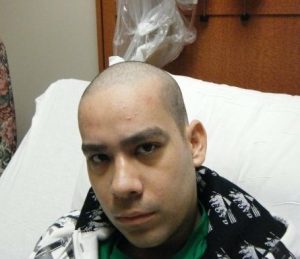 Era el 2007, mientras estudiaba en la Universidad Politécnica en San Juan, cuando Miguel fue diagnosticado y hospitalizado con anemia aplásica. La anemia aplásica es una condición rara y grave. La médula ósea deja de producir suficientes células sanguíneas, lo que deja al paciente cansado y en riesgo de infecciones potencialmente mortales. Afecta la producción de glóbulos rojos y glóbulos blancos, y a las plaquetas.
Era el 2007, mientras estudiaba en la Universidad Politécnica en San Juan, cuando Miguel fue diagnosticado y hospitalizado con anemia aplásica. La anemia aplásica es una condición rara y grave. La médula ósea deja de producir suficientes células sanguíneas, lo que deja al paciente cansado y en riesgo de infecciones potencialmente mortales. Afecta la producción de glóbulos rojos y glóbulos blancos, y a las plaquetas.
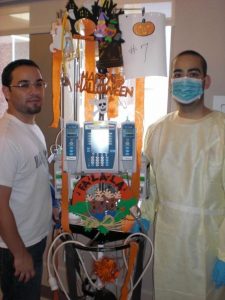 Durante el año siguiente, Miguel recibió tres tratamientos diferentes con la esperanza de estimular su médula ósea en el Hospital Auxilio Mutu en San Juan. También recibió transfusiones semanales de sangre y plaquetas. En septiembre del 2008, estaba combatiendo una infección severa cuando un doctor le dijo a su familia que era posible que no sobreviviría. Su hematólogo, Dr. José A. Lozada lo trasladado por aire a Houston, TX, al MD Anderson Cancer Center, donde estabilizaron su condición y comenzó el proceso para un trasplante de médula ósea.
Durante el año siguiente, Miguel recibió tres tratamientos diferentes con la esperanza de estimular su médula ósea en el Hospital Auxilio Mutu en San Juan. También recibió transfusiones semanales de sangre y plaquetas. En septiembre del 2008, estaba combatiendo una infección severa cuando un doctor le dijo a su familia que era posible que no sobreviviría. Su hematólogo, Dr. José A. Lozada lo trasladado por aire a Houston, TX, al MD Anderson Cancer Center, donde estabilizaron su condición y comenzó el proceso para un trasplante de médula ósea.
Un Trasplante Exitoso de Médula ósea
A pesar de la gravedad de su situación, resulta que Miguel fue muy afortunado. En unos pocos meses, su condición se estabilizó y sucedieron las siguientes cuatro “imposibilidades”:
- Se identificó un donante compatible. (Los pacientes hispanos y latinos solo tienen un 46% de probabilidades de encontrar un donante compatible en el Registro).
- El donante dijo que sí a una donación de médula ósea. (Solo el 37% de los donantes hispanos / latinos dicen sí cuando reciben la llamada).
- Miguel recibió un trasplante de médula ósea para salvarle la vida el 4 de noviembre de 2008.
- 100 días después, su nueva médula ósea comenzó a producir células sanguíneas.
Las probabilidades estaban en contra de Miguel, pero él las venció. Regreso a su ciudad natal en Puerto Rico. Continuó viajando al MD Anderson Cancer Center para chequeos. Después de 2 años en el hospital y con todos los medicamentos y tratamientos de quimioterapia, su cuerpo estaba débil. A través de un amigo, que era un entrenador de spinning, Miguel comenzó a tomar clases de spinning para recuperar las fuerzas. Su amigo también lo presentó a las carreras de bicicleta de montaña.
Después de su Trasplante
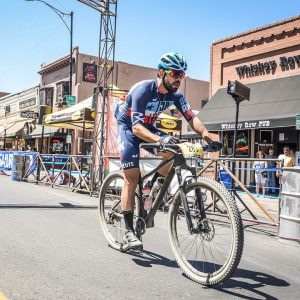 Las carreras de bicicletas eran nuevas para Miguel. Le dio algo que había estado perdiendo después de todo ese tiempo en el hospital: movimiento, libertad y entorno natural. En muy poco tiempo, comenzó a entrenar y conoció a muchos nuevos amigos. También empezó a participar en carreras de bicicleta de montaña de larga distancia. Sus finales de carrera fueron bastante impresionantes:
Las carreras de bicicletas eran nuevas para Miguel. Le dio algo que había estado perdiendo después de todo ese tiempo en el hospital: movimiento, libertad y entorno natural. En muy poco tiempo, comenzó a entrenar y conoció a muchos nuevos amigos. También empezó a participar en carreras de bicicleta de montaña de larga distancia. Sus finales de carrera fueron bastante impresionantes:
- Baja Epic – 2 ° lugar en su grupo de edad
- Prickly Pedal – 2 ° lugar en su grupo de edad
- Festival de bicicleta de montaña de Pisgah – 17 ° en la categoría de hombres abiertos
- Whisky Off Road: top 20 en general
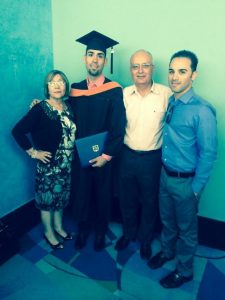 Regresó a la Universidad Politécnica y terminó su carrera de ingeniería eléctrica. Trabaja medio tiempo como ingeniero eléctrico y también trabaja tiempo completo en la farmacia de su padre.
Regresó a la Universidad Politécnica y terminó su carrera de ingeniería eléctrica. Trabaja medio tiempo como ingeniero eléctrico y también trabaja tiempo completo en la farmacia de su padre.
Miguel dice que su trasplante lo hizo más fuerte que antes, tanto mental como físicamente. Él está muy agradecido.
Ayudando a Otros
A medida que Miguel se aproxima al décimo aniversario de su trasplante de médula ósea, quiere involucrarse más en la creación de conocimiento sobre cómo unirte al registro Be The Match. Al contar su historia, quiere motivar a personas que se unan la registro y animar a los pacientes que necesitan un trasplante de médula ósea a que nunca pierdan la esperanza. Un trasplante de médula ósea le salvó la vida. Él insiste en que lo hizo más fuerte que antes, tanto física como mentalmente. “Podemos volver a la normalidad después de un trasplante … puede fortalecernos”.
“Nada es Imposible”
Puedes unirte al registro en apoyo de Miguel haciendo clic en este enlace:
También puedes ayudar a aumentar el conocimiento sobre la importancia sobre unión al registro. Miguel fue muy afortunado. No todos los pacientes logran encontrar un donante compatible. Simplemente no hay suficientes personas registradas para ser donantes potenciales. Puedes cambiar eso uniéndote al registro y difundiendo la palabra. Tú, tus amigos y tus familiares pueden convertirse en salvavidas … nada es imposible.
Para aquellos que no están listos o no pueden unirse al registro, Miguel te recuerda que una pequeña donación ayuda a nuestros esfuerzos para agregar donantes más étnicamente diversos al Registro Be the Match. La Fundación Icla da Silva se concentra especialmente en proporcionar resultados equitativos para los pacientes durante el trasplante, y eso no puede suceder hasta que exista más diversidad en el Registro. Dona en honor de Miguel a:
 Por favor ayúdanos a compartir la historia de Miguel. Nada es imposible; como Miguel, creemos que más personas se unirán al registro y pacientes que sufren ganarán más esperanza.
Por favor ayúdanos a compartir la historia de Miguel. Nada es imposible; como Miguel, creemos que más personas se unirán al registro y pacientes que sufren ganarán más esperanza.
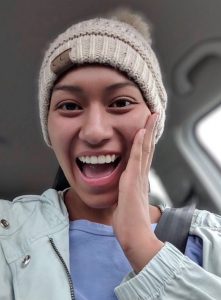 With tremendous sadness, we were recently notified of the untimely passing of Vivianna Sophia Lane. She died Tuesday, August 7th at the Lurie Children’s Hospital of Chicago. We extend heartfelt condolences to her family, her friends and anyone who was fortunate to come in contact with her. Sophia was a talented, passionate and hard working young woman who was fighting a battle with Acute Lymphoblastic Leukemia. We were working with Sophia and her family in their search to find a matching bone marrow donor. Sophia was 21 years old.
With tremendous sadness, we were recently notified of the untimely passing of Vivianna Sophia Lane. She died Tuesday, August 7th at the Lurie Children’s Hospital of Chicago. We extend heartfelt condolences to her family, her friends and anyone who was fortunate to come in contact with her. Sophia was a talented, passionate and hard working young woman who was fighting a battle with Acute Lymphoblastic Leukemia. We were working with Sophia and her family in their search to find a matching bone marrow donor. Sophia was 21 years old.
Her family has notified us that they would like us to keep her hope alive; ” if you haven’t done so, please sign up to be a bone marrow donor. One hundred and forty people signed up to save her life, and others. It made her so happy in her last days.”
Sophia’s Search for a Matching Donor
Vivianna “Sophia” Lane is a 21 year old college student at Lake Forest College, in Lake Forest, IL, a suburb north of Chicago. She is working towards her bachelors degree, a double major in Business and Studio Art.
Sophia is energetic, creative, outgoing and well rounded. She is passionate about art, golf, singing, biking and swimming. She is hard working. Her dedication to golf includes competing on the boys team in high school, caddying, coaching and working at a golf shop. Her devotion to art encompasses volunteering, two internships and her first solo exhibition at the Evanston Art Center.
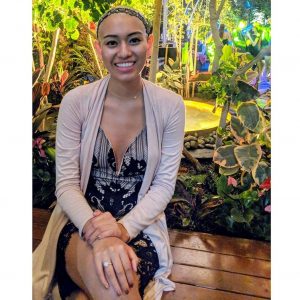 Sophia also has B cell Acute Lymphoblastic Leukemia. She was diagnosed last year (November 2017), underwent chemotherapy treatments and relapsed just last month (July 2018). Her doctors are working to get her into remission so that she can undergo a stem cell transplant. Sophia does not have a sibling match and will rely on the Be the Match registry to find a lifesaving donor.
Sophia also has B cell Acute Lymphoblastic Leukemia. She was diagnosed last year (November 2017), underwent chemotherapy treatments and relapsed just last month (July 2018). Her doctors are working to get her into remission so that she can undergo a stem cell transplant. Sophia does not have a sibling match and will rely on the Be the Match registry to find a lifesaving donor.
We need to find a matching stem cell donor for Sophia. The only way to do this is to ask more people to join the registry.
Joining is easy. Click the link, setup an account with an email and password, and answer a few questions. A swab kit will be sent to your home. Once you swab the inside of your cheek and return it to Be the Match, you are entered in the registry and included in patient searches.
More than 14,000 patients are searching every year. Their cure is inside you. You may save a life.
Please join the registry for Sophia: join the registry
To find more information about the donation process, please click here.
If you have already joined, please help us share Sophia’s story so that we may get others to consider becoming a potential life-saver.
Nothing Is ImpossibleMiguel is celebrating the anniversary of his bone marrow transplant…Miguel is celebrating life. He insists “nothing is impossible”.
Miguel Oriol Torres Lopez, is from Barranquitas, a small mountain municipality in the center of Puerto Rico. Miquel is currently an avid mountain bike racer, and approaching 10 years as bone marrow transplant survivor.
He insists that his experience, and his transplant, made him stronger than he was before.
His Bone Marrow Stopped Working
 It was 2007, while studying at Universidad Politécnica in San Juan, when Miguel was hospitalized and diagnosed with aplastic anemia. Aplastic anemia is a rare and serious condition. The bone marrow stops producing enough blood cells, leaving the patient feeling fatigued and at risk for life threatening infections. It affects the production of both red and white blood cells, as well as platelets.
It was 2007, while studying at Universidad Politécnica in San Juan, when Miguel was hospitalized and diagnosed with aplastic anemia. Aplastic anemia is a rare and serious condition. The bone marrow stops producing enough blood cells, leaving the patient feeling fatigued and at risk for life threatening infections. It affects the production of both red and white blood cells, as well as platelets.
 During the next year, Miguel received three different treatments in the hopes of stimulating his bone marrow at Hospital Auxilio Mutu in San Juan. He also received weekly blood and platelet transfusions. His body was suffering from infection when in September of 2008, a doctor told his family that he could die within the week. His hematologist, Dr. Jose A. Lozada had him air lifted to Houston, TX to the MD Anderson Cancer Center, where they stabilized his condition and began the process for a bone marrow transplant.
During the next year, Miguel received three different treatments in the hopes of stimulating his bone marrow at Hospital Auxilio Mutu in San Juan. He also received weekly blood and platelet transfusions. His body was suffering from infection when in September of 2008, a doctor told his family that he could die within the week. His hematologist, Dr. Jose A. Lozada had him air lifted to Houston, TX to the MD Anderson Cancer Center, where they stabilized his condition and began the process for a bone marrow transplant.
A Successful Bone Marrow Transplant
Despite the severity of his situation, it turns out Miguel was very fortunate. In a few months time, his condition stabilized, and the following four ‘impossibilities’ happened:
- A matching donor was identified. (Hispanic and Latino patients only have a 46% chance of finding a matching donor on the Registry.)
- The donor said yes to a bone marrow donation. (Only 37% of Hispanic/latino donors say yes when they get the call.)
- Miguel received a life-saving bone marrow transplant on November 4, 2008.
- 100 days later, his new bone marrow began producing blood cells.
The odds were stacked against Miguel, but he beat them. Miguel moved back to his hometown in Puerto Rico. He continued to travel back to the MD Anderson Cancer Center for check-ups. After 2 years in the hospital, and with all of the medications and chemo treatments, his body was weak. Through a friend, who was a spinning coach, Miguel started taking spinning classes to gain back body strength. His friend also introduced him to mountain bike racing.
After His Transplant
 Bike racing was new for Miguel. It gave him something he had been missing after all of that time in the hospital – movement, freedom and natural surroundings. In a very short time, he met many new friends and began training, entering and placing in long distance mountain bike races. His finishes were quite impressive:
Bike racing was new for Miguel. It gave him something he had been missing after all of that time in the hospital – movement, freedom and natural surroundings. In a very short time, he met many new friends and began training, entering and placing in long distance mountain bike races. His finishes were quite impressive:
- Baja Epic – 2nd place in his age group
- Prickly Pedal – 2nd place in his age group
- Pisgah Mountain Bike festival – 17th in open mens category
- Whiskey Off Road – top 20 overall
He went back to Universidad Politécnica and finished his electrical engineering degree. He works part time in electrical engineering and full time at his father’s pharmacy.
 Miguel says that his transplant made him stronger, both mentally and physically, than before. He is very grateful.
Miguel says that his transplant made him stronger, both mentally and physically, than before. He is very grateful.
Helping Others
As Miguel approaches the 10 year anniversary of his bone marrow transplant, he wants to become more involved in creating awareness about joining the Be The Match registry. By telling his story, he wants to motivate people to join, and encourage patients in need of a bone marrow transplant to never lose hope. A bone marrow transplant saved his life. He insists it made him stronger, both physically and mentally, than he was before. “We can be normal again after a transplant…it can make us stronger.”
“Nothing is Impossible”
You can join the registry in support of Miguel by clicking this link: join the registry
You can also help increase awareness about the importance of joining. Miguel was very fortunate. Not every patient is successful in finding a matching donor. There simply aren’t enough people who have registered to become a potential donor. You can change that by joining the registry and spreading the word. You, your friends and family may become life savers…nothing is impossible.
For those who are unwilling or not able to join the registry, Miguel is reminding them that a small donation helps our efforts to add more ethnically diverse donors to the Be the Match Registry. The Icla da Silva Foundation is especially focused on providing equitable outcomes for patients as they go through transplant, and that can’t happen until there is more diversity in the Registry. Donate in Miguel’s honor at:
 Please help us share Miguel’s story. Nothing is impossible; like Miguel, we believe that more people will join the registry and patients who are suffering will gain more hope.
Please help us share Miguel’s story. Nothing is impossible; like Miguel, we believe that more people will join the registry and patients who are suffering will gain more hope.
It was winter and she had a bad cold. The cold had triggered an asthma attack and her parents were worried. They took her to the emergency room. The attending doctor ordered a chest x-ray to rule out pneumonia. Veronica did not have pneumonia…but the radiologist was concerned. Her bones appeared larger than normal for a girl of her age.
After a year of referrals to various doctors – endocrinologists, metabolic specialists, radiologists, and hematologists, after multiple rounds of bloodwork, genetic testing and numerous x-rays, it was determined that Veronica Depauli had hardened bones throughout her body. In March 2016, Veronica was diagnosed with a form of osteopetrosis (autosomal dominant osteopetrosis type 2, or ADO2). ADO2 is a rare disorder characterized by increased bone density and abnormal bone growth, which can lead to recurring fractures, vision loss, hearing loss and facial paralysis. It can also impair the function of bone marrow, because the bones are growing at a disproportionate rate, which will prevent the body from producing new blood cells and immune system cells.
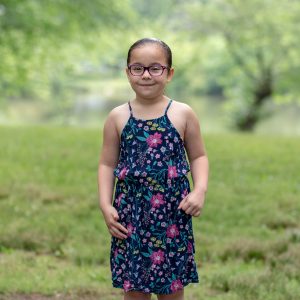 Veronica Depauli is a beautiful, intelligent 7 year old girl. She likes singing and art. You wouldn’t know it by watching her draw, or play with her younger sister Annabelle, that she has a rare disease. You wouldn’t know that her optic canals continue to narrow, which may result in vision loss, or that her bone marrow space has diminished, although it still continues to function. With each passing day, the severity of her symptoms continue to increase. Her little sister helps distract Veronica whenever she is in pain. She brings her ice packs and coloring books and tries to get her to smile by singing. She does the best she can to help her big sister.
Veronica Depauli is a beautiful, intelligent 7 year old girl. She likes singing and art. You wouldn’t know it by watching her draw, or play with her younger sister Annabelle, that she has a rare disease. You wouldn’t know that her optic canals continue to narrow, which may result in vision loss, or that her bone marrow space has diminished, although it still continues to function. With each passing day, the severity of her symptoms continue to increase. Her little sister helps distract Veronica whenever she is in pain. She brings her ice packs and coloring books and tries to get her to smile by singing. She does the best she can to help her big sister.
Veronica Needs Our Help
Veronica Depauli needs a bone marrow transplant. Her doctors believe it can markedly improve her osteopetrosis and offers the best chance for longer-term survival.
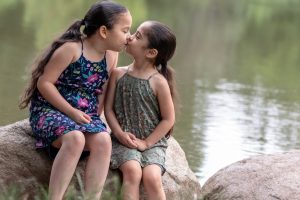 The challenge with every bone marrow transplant is finding a matching donor. The difficulty is finding someone who has a similar HLA type to yours. HLA is a protein, or a marker, found in most cells in your body. Your immune system uses these markers to recognize which cells belong in your body, and which do not. When two people share an ethnic background, there is a better chance that their HLAs will match up and a transplant can take place.
The challenge with every bone marrow transplant is finding a matching donor. The difficulty is finding someone who has a similar HLA type to yours. HLA is a protein, or a marker, found in most cells in your body. Your immune system uses these markers to recognize which cells belong in your body, and which do not. When two people share an ethnic background, there is a better chance that their HLAs will match up and a transplant can take place.
Unfortunately, there are currently no matches in the national database for Veronica. Currently, Hispanic and Latino patients only have a 46% chance of finding a matching donor. This is because only 11% of the current donor pool are Latino. Veronica’s mother, Elise, is of Peruvian/Ecuadorian descent. Her father, Federico, is Uruguayan. We need more people of Hispanic and Latino heritage to join the registry.
Finding a Bone Marrow Donor
The Icla da Silva Foundation is working with the Depauli family to help find a matching donor. We are the largest recruitment center for the Be The Match registry and we focus on adding ethnic diversity to the bone marrow registry. As more people of Latino descent are added to the registry, hope is increased for each of the 16,000 patients who are in need of a bone marrow transplant every year.
You can join the registry, and add hope for Veronica, right here:
Veronica’s parents have been very active in spreading the word and trying to get more people to join the registry. Not just for their daughter, but for all of the patients who are in need of a life saving transplant.
“It’s been very discouraging and I am desperate because God forbid my daughter does not get a match” – Elise Luciano, Veronica’s Mom
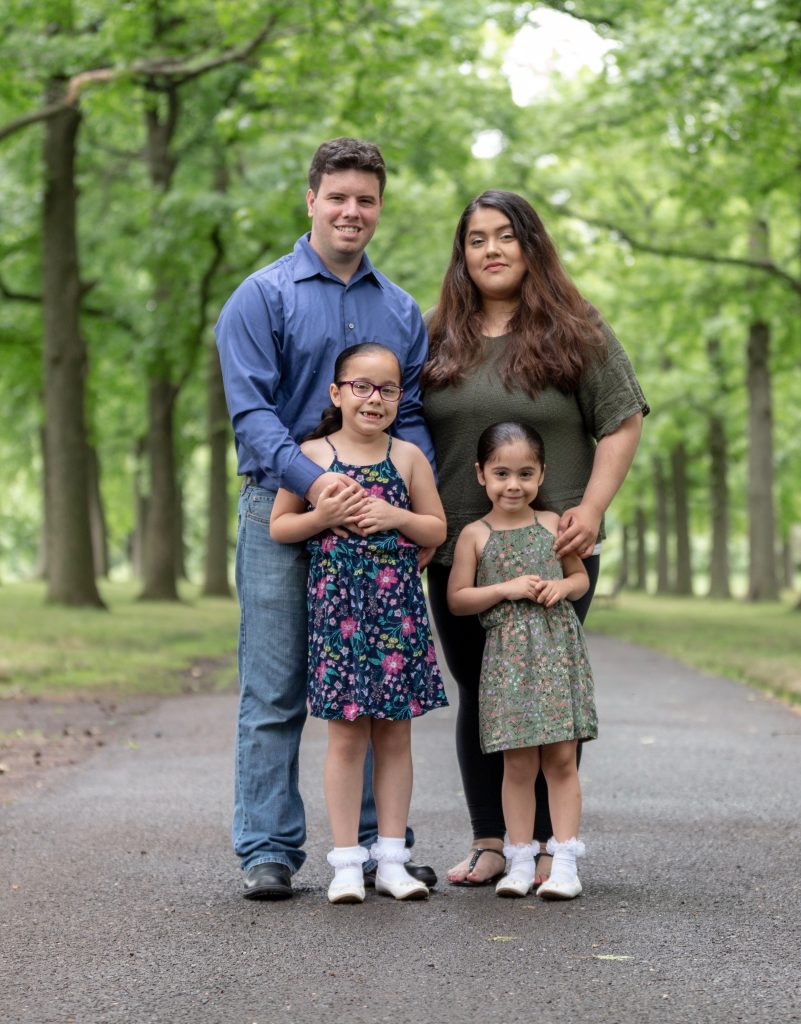 “Please help us, what would you do if it were your child, your family…please join the registry, you could save somebody’s life” – Federico Depauli, Veronica’s Dad
“Please help us, what would you do if it were your child, your family…please join the registry, you could save somebody’s life” – Federico Depauli, Veronica’s Dad
Joining the Registry
The steps to join the registry are simple:
- Register online by clicking the link.
- Set-up an account with a password, and answer some basic background and eligibility questions.
- Receive a swab kit in the mail so they can get a copy of your HLA marker by swabbing the inside of your cheek with a q-tip.
- Return the swab kit so you can be added to the registry.
If you match a patient in need of a life saving transplant, the vast majority of bone marrow donations occur through a process called PBSC, which is a non surgical procedure that is very similar to giving plasma. If you would like more information on the typical donation process, please click here.
Despite thier continued challenges, Veronica’s parents hold onto the hope that a matching donor will be found.
“One day my daughter will be pain free, one day my daughter will be able to live just like any other child” -Elise Luciano, Veronica’s Mom
We hope so too Elise.
Please join the registry for Veronica Join the registry
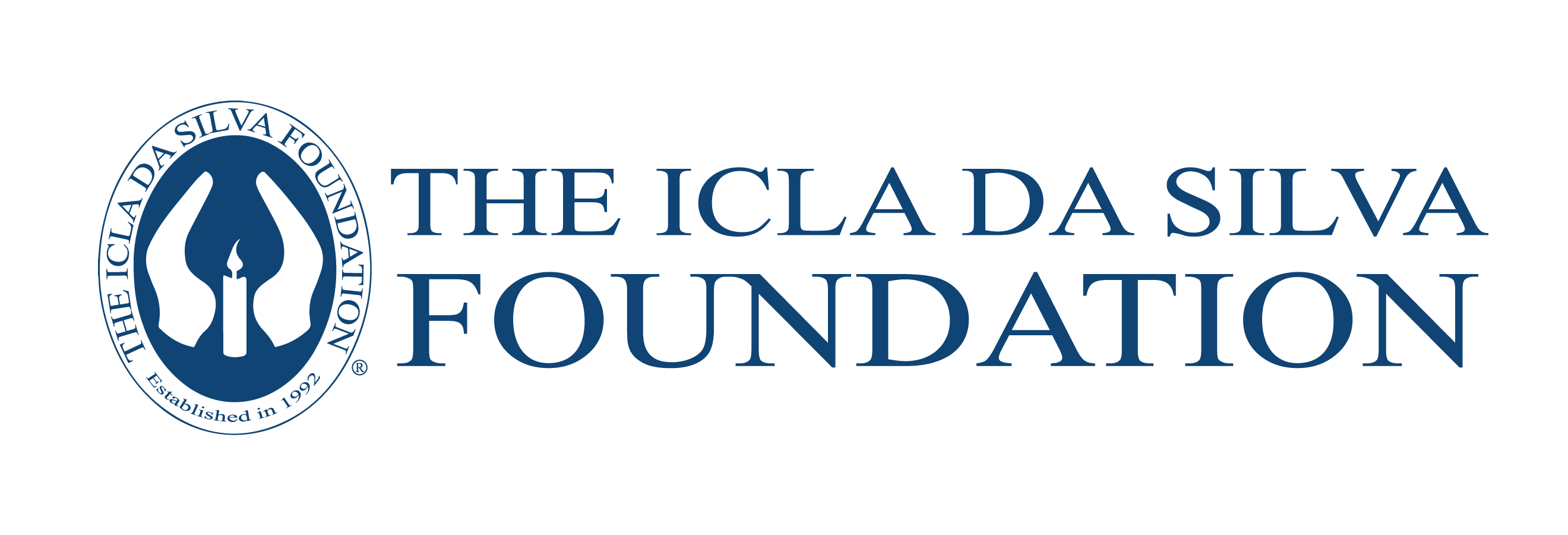
 Inglês
Inglês Espanhol
Espanhol Português
Português